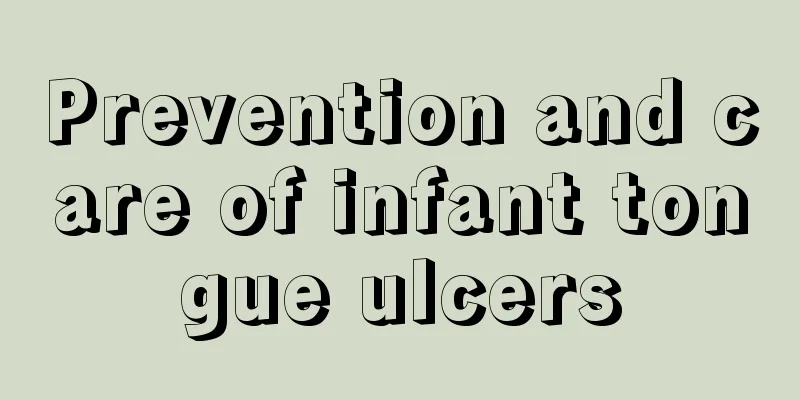How to make a three-month-old baby lift his head?

|
Many parents don’t know much about the issue of baby lifting his head, but this is also an important matter for the baby’s growth and development, especially when the baby is just a few months old. It seems rare for a three-month-old baby to lift his head, but it does happen. If he lifts his head at this time, there will be many benefits. Now I will explain in detail how to make a three-month-old baby lift his head, and I hope it will be helpful to everyone. Learning to lift your head can expand your baby's field of vision and promote intellectual development. There are three methods: First, hold the baby upright, leaning on the mother's shoulder, and slowly let his head move away and stand naturally for a few seconds. This can be done after each feeding. The second is to let the baby lie on his stomach on the bed with his head tilted to one side, and then call or tease him from the other side to let him raise his head for a moment; the third is to let the baby lie on you face to face, straighten his head, and then slowly lie flat from a reclining position, and the baby will naturally try to raise his head. Be careful not to let your baby lie prone when he or she has just eaten; do not practice raising the head for too long, one or two minutes is appropriate; let your baby lie on his or her back to rest afterwards. Babies can lie on their stomachs a few days after birth, but babies within one month old cannot lift their heads on their own when lying on their stomachs. They can only struggle instinctively to turn their faces to one side. At two months old, they can slightly lift their heads and chests, and at three months old, their heads can be lifted steadily. The prone head-raising exercise not only exercises the baby's neck and back muscle strength and increases lung capacity, but also allows the baby to face the world earlier and receive more external stimuli. The training should be done when the baby is awake and on an empty stomach, that is, 1 hour before feeding, on a flat and comfortable bed. Bend the baby's arms in front of the chest and lie prone on the bed. The parent will turn the baby's head to the center, hold a colorful and noisy toy in front of it to tease it, saying, "Baby, here are the beautiful toys", and make the baby try to raise his head. The movement of raising the head starts from 45 degrees to the bed surface and gradually stabilizes. At 3 months old, the baby can lift it stably to 90 degrees. At the same time, parents can slowly move the toy from the baby's eyes to the left side of the head, and then slowly move it to the right side of the baby's head, allowing the child to turn his head in the direction of the toy. Each training session should start from 30 seconds and gradually extend the time. Practice 3 to 4 times a day, and each prone time should not exceed 2 minutes. Regarding the specific situation of how to make a three-month-old baby lift his head, I believe everyone must have a clear understanding. You can help your baby practice at home, but be careful not to make too big movements. The child is now very fragile. You must practice with the child according to the above steps, and then you can help the child to broaden his horizons! |
<<: What is the standard weight for a three-month-old baby?
>>: What should I do if my six-month-old baby has a low-grade fever?
Recommend
What are the developmental standards for a two-year-old baby?
What are the developmental standards for a two-ye...
How can children grow taller
How tall a child can grow has a lot to do with ge...
How to treat a 2-year-old baby grinding his teeth while sleeping
Many people grind their teeth when they sleep. Th...
How high jaundice affects intelligence
Jaundice is the most common problem among newborn...
Reasons why babies blink frequently
Every parent wants their child to grow up healthy...
Two month old baby loves to stick out his tongue
We all know that when a baby is two months old, h...
Why do babies cry even though they are full?
Babies are a group that many doctors pay attentio...
Hand, foot and mouth disease in children
Hand, foot and mouth disease is a common disease ...
Newborn baby's arms are always bent
When a child is just born, in addition to having ...
What are the causes of children's heavy breath?
If a child has bad breath, parents should be aler...
How to have a boy
Although it is the same whether you have a boy or...
Symptoms of foot-and-mouth disease in children, these are the most common!
Foot-and-mouth disease is common in children. The...
How many times does a 2 month old baby poop?
People are always concerned about children's ...
Why can't babies sleep well at night?
Babies should normally get enough sleep, sleeping...
How to treat rhinitis in a three-year-old child
For children, rhinitis is very uncomfortable. Of ...









